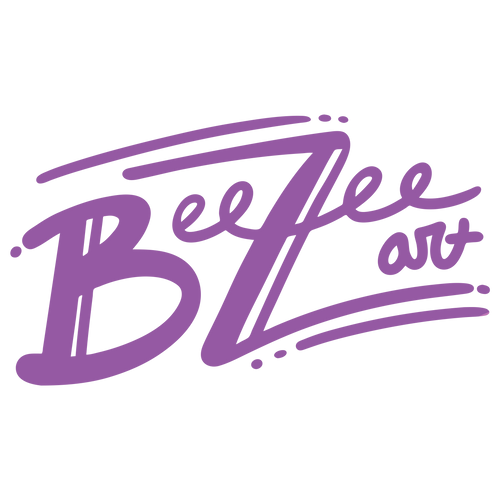
A New Sewing Machine for Sewing Efficiency
I’m always looking for ways to improve my little plushy business. When I first started it was all about reducing costs, but the larger it grows, the more I find myself strapped for time. I think every artist who freelances can relate to the feeling. If we only had a few more hours in the day to make more, do more, earn more, self care more, life would be so much easier. Time has become such a limiting factor in every aspect of BeeZeeArt. It stops me from offering new products, trying new techniques, updating old patterns (I feel like you guys are going to kill me soon if I don’t find time to update the bat pattern), taking photos, and so much more.
I already posted this little article awhile ago on speeding up your sewing process (bit.ly/1UTzx4j) and much of that still remains relevant to me. However, I've since purchased a new sewing machine. My machine, a Pfaff Performance 5.0 is one of the best decisions I’ve made for a more efficient sewing process. The reason why I’m sharing all this is because, frankly, if someone would have told me that the single best way to reduce the amount of time I spent sewing would be to upgrade my machine, I wouldn’t have believed them. There was nothing wrong with my Brother. There’s still nothing wrong with it, it’s a great machine and I’d recommend one in a heart beat. Even when I first got my Pfaff, I thought I had completely wasted my money. After I got used to the machine and built the same muscle memory I have with my Brother, the differences became startling. All the new features of my Pfaff realistically only save a bit of time. When you are sewing 8+ hours a day, 6 days a week, all of those tiny bits of time add up.

The IDT system has eliminated the need to pin most things. Yes, even minky. Slipping, sliding, and uneven feeding is almost nonexistent and my sewing is more accurate meaning less time spent seam ripping. The automatic presser foot (no bar to lift/lower it!) raises the presser foot instantly when the needle is set to stop down, which making tight turns that require a lot of pivoting an absolute dream. When you start sewing, everything lowers, so no annoying error message telling you to lower the presser foot. It also raises/lowers with a tap of the foot pedal and at the end of a seam after a thread snip. There are no screws on the needle plate, making it easy to remove for cleaning or if there is an issue (even the best sewing machine still bird nest the thread from time to time). It’s easy to switch to a straight stitch plate to prevent small pieces from getting stuck in the feed dogs and the machine has a sensor that wont allow you to change the needle position if you forget the straight stitch plate is on. No more broken needles or machine damage due to carelessness. Automatic tension, uh, love! And I don’t know if anyone else’s SE400 did this, but when I started a line after using the automatic cutter to cut the thread, it started with a little micro bird nest of thread under the fabric, making decorative top stitching a pain in the butt to make it look nice. I had to use a fabric scrap as a starter to avoid this. With my pfaff, that’s not an issue anymore.
Making a move to a high end machine is not something I recommend for a casual sewing hobby, but for someone who is sewing for a living, the amount of time I save has more than made up for it. I used to be able to sew about 4 plush bats a day, but the other day I managed to make a stunning 8 bats in a single day. Almost doubling my production means this machine will pay for itself quickly.
I know I sound like a Pfaff dealer at this point, but many of these features aren't exclusive to the Pfaff. Thought the IDT system is, Janome also has a similar, though not exactly the same, accufeed system. The other automation features can be found on most high end sewing machines, however. You don’t need to drop $2,000+ for a new model, either. Check Ebay or Craigslist. Many people buy a high end sewing machine thinking they will use it for their hobby, then find it collecting dust. You can often find a model just one or two versions behind that will be much cheaper without sacrificing key features. My Pfaff dealer advised against buying a sewing machine in August or September. When kids go back to school, parents often branch out to new hobbies (like sewing) for their newly gained spare time and, as a result, sewing machines will rarely be on sale. You can also often buy old demo or floor models from sewing machine dealers for a reduced price. Another place to look for used sewing machines is anywhere that has sewing classes as they often have old machines that need a home when they upgrade to newer models.
So if you feel like you just can't squeeze any more time out of your day, maybe you should take a step back and look at your sewing machine. You might love it and love working on it, but maybe it’s time for an upgrade. I still keep my Brother SE400 close at hand and ready to go, but my new machine has stolen my heart.

